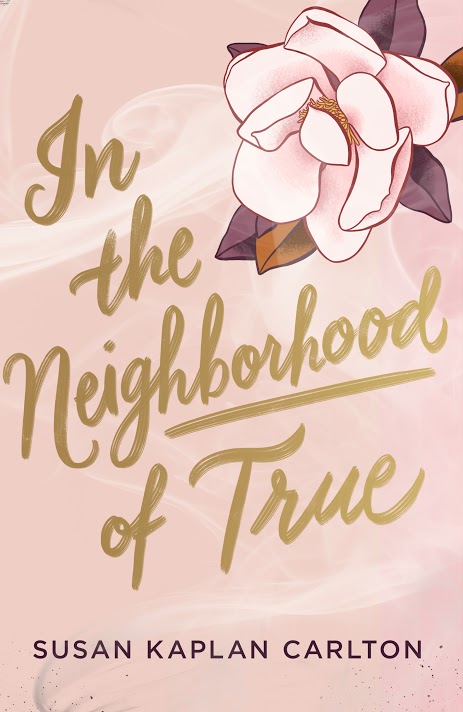 IN THE NEIGHBORHOOD OF TRUE, by Susan Kaplan Carlton, Algonquin Young Readers, April 9, 2019, Hardcover, $17.95 (young adult)
IN THE NEIGHBORHOOD OF TRUE, by Susan Kaplan Carlton, Algonquin Young Readers, April 9, 2019, Hardcover, $17.95 (young adult)
I’m still trying to decide how I feel about Susan Kaplan Carlton’s In the Neighborhood of True, which, since I finished it more than a week ago, must mean that it sticks with you.
The story takes place in 1958 Atlanta. Following the sudden death of her father, Ruth Robb, her mom and younger sister move to the South from New York City. Their new home — the pool house in her grandparents’ backyard — is just one of many changes thrust upon Ruth.
Friendless in a new town, Ruth decides to follow the family tradition of becoming a deb, joining the “pastel posse” and their little pink book of manners. Ruth quickly falls for Davis and soon finds herself in a world of etiquette, ball gowns and country clubs.
Part of fitting in means fitting a mold, and Ruth doesn’t. So she decides to hide her Jewish heritage and her attendance at Sabbath services. But as much as Ruth wants to look the other way, in a segregated Atlanta, that’s just not a choice. When a hate crime hits close to home, Ruth must decide once and for all where she belongs.
In the Neighborhood of True is rooted in some deeply personal experiences in Carlton’s own life. Her family moved to Atlanta and joined a synagogue. “We were still new to town when our youngest daughter announced she’d learned that the classroom she spent every Sunday morning in had been the site of a bombing 50 years before,” Carlton said in a blog tour Q&A. “That stayed with me — the idea that the walls that held these kids had once been blown apart. In the Neighborhood of True is a response to that bombing in 1958, retribution for the rabbi’s involvement in civil rights.”
As Carlton developed the story, the author realized Ruth’s various lies and omission about her religion rang true in other ways. “I remembered my college boyfriend asking me to not tell his grandfather that I was Jewish…he just wanted the man to like me, he said. And, unbelievably, I agreed. That’s the question I found myself puzzling over — why was I so quick to hide who I was for this boy I loved?”
Knowing about the seeds of In the Neighborhood of True gives the story weight. Their scope adds to the already present authenticity. Ruth can, at times, appear a little shallow, but the further you read, the more complex she becomes, especially in relation to her “friends.”
In the Neighborhood of True is well written, but I felt at odds with it throughout. I often felt uncomfortable, and maybe I was meant to. The book is set in 1958, and the language and attitudes reflect that. However, the racial sentiments of 1958 haven’t evolved as much as we’d like to think since then. Neither have the religious ones. It seems we are a society intent on singling out one group or another for their supposed “faults.”
In the Neighborhood of True sticks with you. While I’m not sure I’d reread it, I’m glad it crossed my path.
